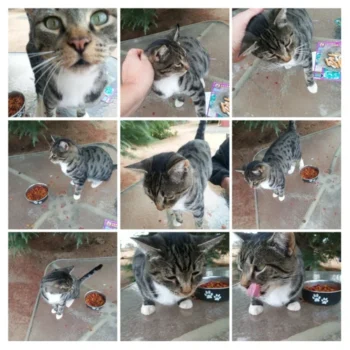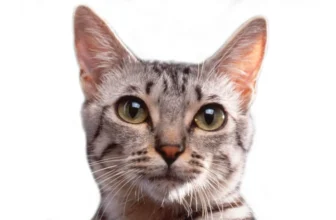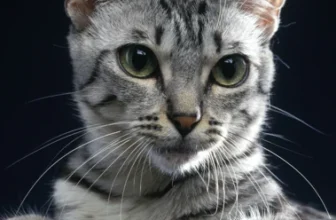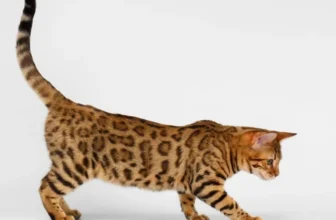Introduction
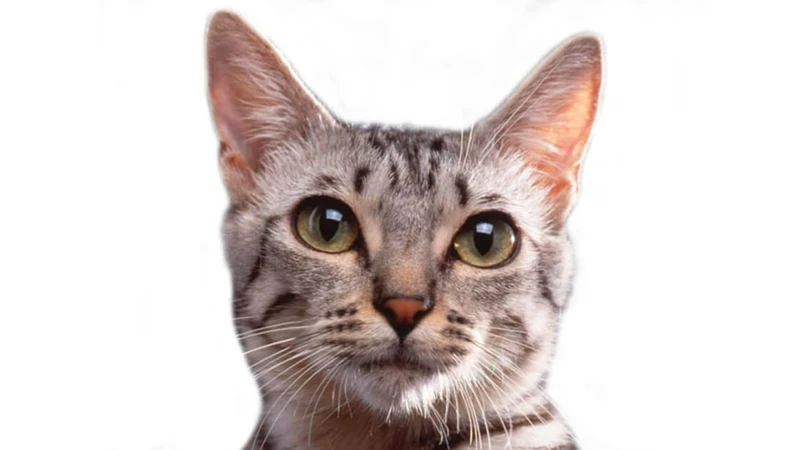
As cat lovers, it’s always fascinating to learn more about our furry friends. When it comes to California Spangled Cats, in particular, their mating behavior is a topic of great interest. From the courtship process to reproduction, genetics, and breeding, there’s a lot to uncover. In this comprehensive guide, we’ll delve into the complex world of California Spangled Cats’ mating behavior, exploring unique traits, caring for pregnant cats, raising kittens, and much more. So let’s dive in and discover everything you need to know about these beautiful felines.
About California Spangled Cats
California Spangled cats are a unique breed known for their striking appearance and distinctive personalities. This breed was created in the 1980s by a Hollywood scriptwriter named Paul Casey. He wanted to create a breed of domestic cat that resembled a miniature leopard, and he succeeded.
Appearance: California Spangled cats have a muscular build and a distinctive spotted coat. They come in a range of colors, from silver to bronze, and their coats can be short or long. They have long legs, large ears, and piercing green eyes that give them a wild and exotic look.
Temperament: California Spangled cats are intelligent, curious, and playful. They are known for their love of climbing and exploring, and they have a lot of energy. They are also very affectionate and love to cuddle with their owners.
Health: California Spangled cats are generally healthy, but like all breeds, they are prone to certain health issues. One of the most common health issues in California Spangled cats is infertility. If you are planning on breeding your California Spangled cat, it is important to be aware of this issue and take steps to prevent it.
Lifespan: California Spangled cats can live for up to 15 years or more with proper care and attention. It is important to provide your cat with a healthy diet, regular exercise, and regular vet checkups to ensure a long and happy life.
If you are considering adding a California Spangled cat to your household, it is important to learn as much as possible about this unique breed. With the right care and attention, California Spangled cats can make wonderful pets and companions.
For more information on breeding and caring for California Spangled cats, check out our articles on optimal breeding age, breeding tips and tricks, and infertility. If you are interested in the courtship and mating behavior of California Spangled cats, you can also read our article on successful mating.
The Courtship Process

As fascinating as it is to observe the unique behavior of California Spangled cats, their courtship process is particularly intriguing. It involves a series of complex behaviors and vocalizations that can vary between individuals. During this process, male cats will engage in different courtship behaviors to capture the attention of the female cat. From chirping to flicking their tails, each move is a calculated effort to convince the female to mate. In the following sections, we will take a closer look at these behaviors and explore the differences between wild and domestic settings. Additionally, we’ll delve into the various stages of reproduction, genetics, and breeding. If you’re interested in learning how to properly care for pregnant cats or raise a litter of kittens, keep on reading. By the end of this comprehensive guide, you’ll be well-equipped with the necessary knowledge to ensure the health and happiness of your beloved California Spangled cat. And if you’re interested in learning about the birthing process of California Spangled cats or their unique genetics, you can find more information by following the internal link on /california-spangled-cat-birthing/ or by reading our article on /genetics-california-spangled-cats/.
Mating Calls and Behaviors
The California Spangled cat is a species known for their unique mating calls and behaviors. These feline creatures have a distinct way of communicating their desire to mate. Below are some of the common mating calls and behaviors of California Spangled cats:
- Yowling: Female California Spangled cats yowl or make a loud, almost screeching noise when they are ready to mate. The yowl is typically a series of high-pitched meows. Male California Spangled cats also yowl, but their sound is usually deeper and longer.
- Flirting: When a female California Spangled cat is in heat, she will flirt with the male cat by rubbing her body against his and rolling around on the ground, exposing her belly and raising her hindquarters. Male California Spangled cats will flirt back by nuzzling the female and licking her face.
- Chasing: After the initial flirting, male California Spangled cats will often chase the female around. This chase is usually a playful one and not aggressive in nature.
- Mounting: Once the male and female California Spangled cats are ready, the male will mount the female from behind. This behavior is also known as “mating.”
- Growling: During mating, male California Spangled cats may growl or make low-pitched noises. This growling is a sign of pleasure and excitement.
Understanding the mating calls and behaviors of California Spangled cats is important for owners who wish to breed their pets. It is recommended to consult with a veterinarian or a professional breeder before attempting to breed California Spangled cats. Additionally, proper care and attention should be given to both the male and female during the mating process to ensure a safe and healthy pregnancy.
Mating in the Wild vs Domestic Settings
Mating behaviors in California Spangled Cats can differ between those living in the wild and those in domestic settings. In the wild, California Spangled Cats follow their natural instincts and instincts for survival. They will mate based on the availability of potential partners, with males competing for females and females choosing a mate based on factors such as strength and dominance. In domestic settings, however, mating behavior can be influenced by various factors such as access to potential partners, spaying and neutering, and human intervention.
Wild Mating Behavior
In the wild, male California Spangled Cats will use vocalizations and scent marking to attract potential mates. They will engage in aggressive competitive behaviors such as fighting with other males to win the attention of a female. Females will respond to a male’s advances by vocalizing and showing physical signs of interest.
The mating process can be violent, with mating lasting for several minutes and often involving the male biting the back of the female’s neck to hold her still during copulation. Due to the competitive nature of mating in the wild, male California Spangled Cats will mate with as many females as possible to ensure the survival of their genetic line.
Domestic Mating Behavior
Domesticated California Spangled Cats tend to have a different mating behavior compared to their wild counterparts due to spaying and neutering practices. Fixed cats are not as likely to engage in aggressive behaviors, and males may not mark their territory as frequently. This can lead to a more docile courtship process with less vocalizations and aggression.
Some pet owners may choose to keep their cats indoors, which limits the availability of potential mates. This can also lead to a more docile and less competitive mating process.
However, educating cat owners about responsible breeding practices and only allowing healthy cats of good temperament to breed can help maintain the unique characteristics of California Spangled Cats. It is important to consider the potential impact of breeding domesticated California Spangled Cats and to promote the health and well-being of both the mother and kittens during the mating and pregnancy process.
| Wild Mating Behavior | Domestic Mating Behavior |
|---|---|
| Aggressive competitive behaviors | Less aggressive and more docile courtship |
| Male competes for female | Spaying and neutering can limit availability of potential mates |
| Males mate with as many females as possible | Educating pet owners about responsible breeding practices can help maintain unique characteristics |
| Mating process can be violent | Fewer vocalizations and physical aggression |
Reproduction
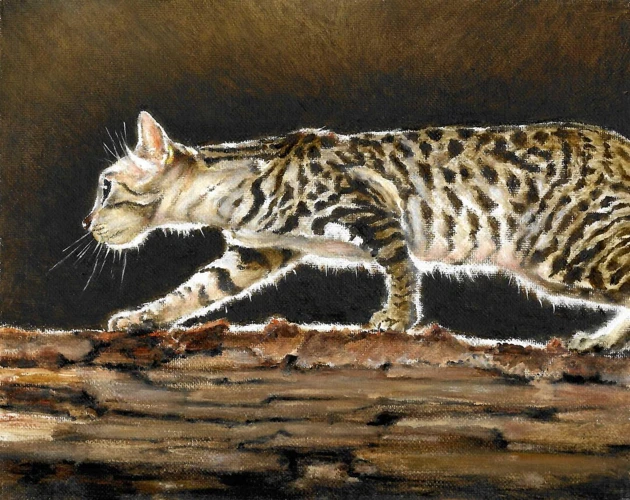
The process of reproduction in California Spangled Cats is a complex one that involves several stages. From the onset of female heat cycles to the birth of kittens, there’s a lot to consider when it comes to the reproductive cycle of these magnificent felines. In this section, we’ll delve into the intricacies of California Spangled Cat reproduction, covering everything from mating and fertilization to gestation and birth. So, fasten your seatbelts, and let’s take a deep dive into the world of California Spangled Cat reproduction.
Female Heat Cycles
Understanding the heat cycle of female California Spangled Cats is crucial for responsible breeding and managing their reproductive health. During their heat cycle, female cats exhibit various physical and behavioral changes that signify their fertility.
Duration of Heat Cycle
The heat cycle of a female California Spangled Cat usually lasts around 7-10 days. However, this can vary depending on the individual cat’s age, health, and environment. It’s essential to keep track of your cat’s heat cycle to prevent unwanted pregnancy and manage their reproductive health.
| Stage | Duration |
|---|---|
| Proestrus | 1-2 days |
| Estrus | 4-7 days |
| Interestrus | 1-3 weeks |
Signs of Heat Cycle
During the proestrus stage, female California Spangled Cats may exhibit signs such as restlessness, increased vocalization, and rubbing against objects or people. As the estrus stage begins, the female’s behavior may become more intense, and they may become more receptive to males. Physical changes such as a swollen vulva and increased urination are also common during this stage.
Preventing Unwanted Pregnancy
To prevent unwanted pregnancy, spaying female California Spangled Cats is recommended. Spaying involves removing the ovaries and uterus, preventing the cat from going into heat and reproducing. It’s a relatively straightforward procedure that can be done at any point in a cat’s life.
Managing Reproductive Health
Regular visits to the veterinarian can help manage the reproductive health of California Spangled Cats. During these visits, the vet can examine the cat for any potential issues, such as infections or abnormalities. They can also provide guidance on breeding and managing the cat’s heat cycle.
Understanding the heat cycle of female California Spangled Cats is crucial for responsible breeding and managing their reproductive health. By keeping track of their heat cycle and seeking veterinary care, we can ensure the health and well-being of these beautiful felines.
Mating and Fertilization
The process of mating and fertilization in California Spangled Cats involves a complex series of behaviors and physiological changes. Here are some important details to understand about this process:
- Mating behavior: When a female cat is in heat, she will release pheromones that attract males. The males may then engage in various courtship behaviors, including vocalizations, rubbing against the female, and even biting her neck. Once the male has mounted the female, the actual act of mating can last anywhere from a few seconds to several minutes.
- Fertilization: During the act of mating, the male cat will ejaculate sperm into the female’s reproductive tract. From there, the sperm must make their way to the female’s eggs, which are located in her ovaries. If successful, fertilization will occur and the female will become pregnant.
- Ovulation: It’s worth noting that unlike some other animal species, female cats do not ovulate until they have been stimulated by a male. This means that without mating, a female cat will not become pregnant. Once a female has been copulated and fertilized, gestation can begin, which typically lasts around 63 to 65 days.
- Multiple partners: It’s also worth noting that a female cat may mate with multiple partners during her heat cycle, which increases the chance of fertilization and can potentially result in litters with multiple fathers (i.e., kittens that have different genetic material and physical characteristics).
The process of mating and fertilization in California Spangled Cats is complex and fascinating, with many factors that can impact the outcome. Understanding the intricacies of this process can help cat owners and breeders better care for their feline companions and raise healthy, happy kittens.
Gestation and Birth
During pregnancy, the gestation period for California Spangled cats can last between 63-65 days. It’s crucial to provide a safe, comfortable environment for pregnant cats during this time. Here are some key points to keep in mind during gestation and birth:
1. Signs of Labor: Before the onset of birth, the cat may show signs of discomfort and restlessness. She may pace, lick her genital area, and vocalize more frequently. These are signs that labor is imminent.
2. Birthing Process: During birth, cats usually give birth laying down. You may notice the birthing sac first, followed by the kitten. Most cats will take care of the birthing process on their own, but it’s always good to be nearby to offer support and assistance if needed.
3. Newborn Kittens: Kittens are born with their eyes closed and ears folded. The mother cat will naturally clean the kittens and stimulate their breathing and circulation. Make sure to provide a warm, quiet space for the mother and her kittens and limit outside disturbances.
4. Nutrition: During gestation and nursing, it’s crucial to provide mother cats with a balanced diet that is high in protein and essential nutrients. This will help ensure healthy kittens and postpartum recovery for the mother.
5. Postpartum Monitoring: After the birth of the kittens, monitor the mother’s health closely. Keep an eye out for any signs of complications, such as discharge, fever, or lethargy. The kittens should also be monitored for proper feeding and growth.
By understanding the gestation and birthing process, and providing proper care and support, California Spangled cats can have healthy pregnancies and successful births.
Genetics and Breeding
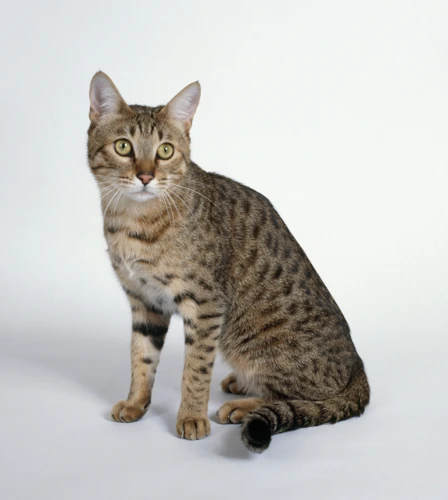
Breeding and genetics play a crucial role in the development and characteristics of California spangled cats. Understanding the unique traits and considerations for breeding these cats is essential for responsible breeders. From coat colors and patterns to temperament and health, every aspect of their genetics requires attention. In this section, we will explore the fascinating world of California spangled cat genetics and breeding, and how breeders can ensure the health and well-being of their feline companions. So, let’s dive into the intricacies of breeding and genetics of California spangled cats.
Unique Traits of California Spangled Cats
California Spangled Cats have several distinctive traits that set them apart from other cat breeds. Some of these unique characteristics include:
- Distinctive Coat Pattern: California Spangled Cats have a distinctive and striking coat pattern that sets them apart from other breeds. Their coats are spotted, with spots ranging in size from small to large, and come in a variety of colors, including silver, bronze, and gold.
- Strong and Athletic Build: These cats have a muscular and athletic build, which makes them great hunters and jumpers. They are also known for their speed and agility, which makes them excellent climbers.
- Intelligence and Trainability: California Spangled Cats are highly intelligent and trainable. With consistent training, they can learn a variety of tricks and behaviors, making them great pets for families who enjoy training and interacting with their pets.
- Friendly and Affectionate: Unlike some other cat breeds, California Spangled Cats are known for their outgoing and friendly personalities. They are affectionate with their owners and enjoy spending time with people.
- Independence and Curiosity: While they are affectionate with their owners, California Spangled Cats are also independent and curious. They enjoy exploring their environments and investigating new things.
California Spangled Cats are a unique and interesting breed with many distinctive traits that make them stand out from other cats. From their striking coat pattern to their intelligence and trainability, these cats are a great choice for anyone looking for a loyal and affectionate pet.
Considerations for Breeding
Breeding California Spangled cats requires careful consideration. These unique cats are a rare breed, and it’s important to ensure that their genetics are preserved while also avoiding inbreeding. Here are several important factors to consider before breeding California Spangled cats:
- Choose appropriate breeding stock: When selecting cats for breeding, it’s essential to choose cats that have excellent health and conform to the breed standard. This helps eliminate any genetic issues that may be passed down to their offspring.
- Genetic diversity: Ensuring that breeding pairs have diverse genetics can help prevent inbreeding and the associated health problems that can arise. It’s important to keep a careful record of the pedigrees of any cats used for breeding and select pairs with varying genetics.
- Screen for genetic disorders: Some genetic disorders are more common in California Spangled cats, such as hypertrophic cardiomyopathy. It’s essential to screen breeding cats for these conditions to avoid passing them down to their offspring.
- Consider potential homes for kittens: As a responsible breeder, it’s important to consider where your kittens will end up. Make sure to only sell kittens to appropriate homes where they’ll have adequate care and love.
- Register with a reputable organization: Registering with a reputable organization, such as The International Cat Association (TICA), helps ensure that your cats are of high quality and not prone to genetic defects.
By taking these important considerations into account, you can help ensure that any litters you produce are healthy, happy, and of outstanding quality.
Caring for Pregnant Cats
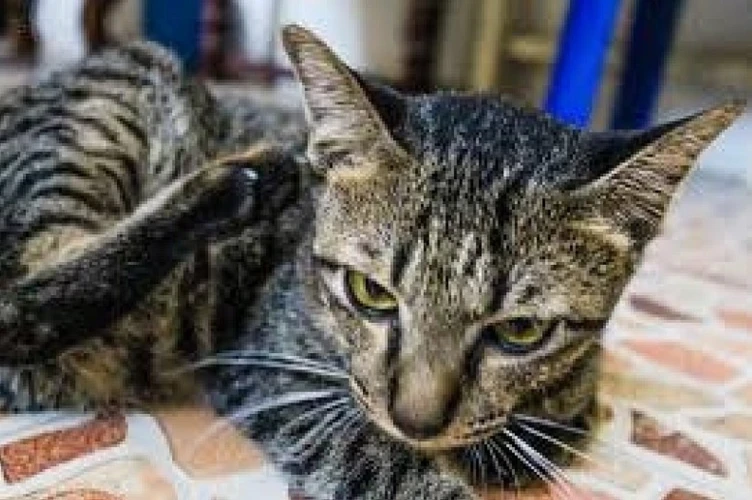
Welcoming a new life into the world is an exciting and joyous event, but it also requires careful planning and preparation. If you’re the proud owner of a pregnant California Spangled cat, congratulations! Taking care of a pregnant cat is both an honor and a responsibility. Pregnancy can be a time of great joy, but it is also a time when cats need extra attention, care, and support. In this section of the guide, we’ll explore the various aspects of caring for your pregnant cat and ensuring that she has a safe and comfortable pregnancy. From meeting her dietary needs to ensuring adequate exercise, we’ll cover everything you need to know. So let’s dive in and begin this journey together!
Dietary Needs and Exercise
When caring for a pregnant California Spangled cat, it’s important to pay attention to their dietary needs and exercise routine. Proper nutrition and activity levels can have a significant impact on the health of both the mother and her kittens.
Dietary Needs: A pregnant cat’s diet should consist of high-quality cat food that is rich in nutrients and calories. It’s crucial to ensure that the food provides the necessary protein, calcium, and minerals for the health of the mother and her developing litter. It’s recommended to feed the mother smaller, more frequent meals to prevent her from overeating or experiencing digestive issues. Additionally, giving her access to clean, fresh water is essential to keep her hydrated and ensure proper kidney function.
Exercise: While pregnant, it’s important for a California Spangled cat to get regular exercise to maintain muscle tone, stimulate blood flow, and improve overall health. Light exercise, such as gentle playtime or short walks, is recommended to prevent obesity and reduce the risk of complications during delivery. However, it’s crucial to avoid strenuous exercise or activities that could cause injury or stress to the mother.
Here is a table outlining some key considerations for the dietary needs and exercise of pregnant California Spangled cats:
| Dietary Needs | Exercise |
|---|---|
| High-quality, nutrient-rich food | Gentle playtime and short walks |
| Small, frequent meals | Light exercise to maintain muscle tone |
| Fresh, clean water available at all times | Avoid strenuous exercise or activities that could cause injury or stress |
It’s essential to consult with a veterinarian about the dietary needs and exercise plan for your pregnant California Spangled cat. Every cat is unique, and their individual needs should be taken into consideration to ensure a healthy pregnancy and delivery.
Prenatal Vet Care
During pregnancy, it is essential for the pregnant California Spangled Cat to receive proper prenatal vet care for the health of both the mother and the kittens. Here are some essential prenatal vet care steps that should be taken during the pregnancy.
1. Regular Check-Ups: Regular veterinary check-ups will ensure the healthy progression of the pregnancy. During these check-ups, the vet will weigh the pregnant cat, check her vitals, and monitor the growth and health of the kittens.
2. Vaccinations: Vaccinations are essential for the health of the mother and unborn kittens. The mother should be up-to-date on all her vaccinations, and the veterinarian may also recommend additional vaccinations during pregnancy to protect the kittens.
3. Diagnostic Tests: Diagnostic tests, such as ultrasounds and bloodwork, may be conducted to ensure the health of the kittens and determine the number of kittens.
4. Nutrition: Proper nutrition is critical during pregnancy for the health of the mother and the development of the kittens. The veterinarian may recommend a special diet for the pregnant mother to ensure she is getting all the necessary nutrients.
5. Exercise: Moderate exercise is essential during pregnancy to promote a healthy pregnancy and delivery. The veterinarian may recommend certain types of exercise appropriate for the pregnant cat.
Proper prenatal vet care is essential for a healthy pregnancy and delivery for both the mother and the kittens. Following these steps can help ensure a stress-free and happy birthing experience for you and your California Spangled Cat.
Raising Kittens
As the offspring of California Spangled cats enter the world, a new chapter in their care begins. The task of raising kittens may seem daunting, but with proper preparation and care, you can ensure they grow up to be healthy and happy adult cats. From pre-birth preparations to postpartum care, this stage of their development requires attention to detail and a nurturing touch. In this section, we’ll explore the steps you’ll need to take to raise California Spangled kittens successfully. So, let’s dive in and discover the joys that come with raising these adorable felines!
Preparing for Birth
As a California Spangled cat owner, it is essential to be prepared for your cat’s upcoming birth. Proper preparation for the birth of your cat’s kittens can help provide a safe and comfortable birthing experience for not only your cat but also her offspring.
Supplies: Before the birth of the kittens, you should ensure that you have all the necessary supplies. These supplies include a nesting box, towels, gloves, scissors, string to tie off umbilical cords, and clean blankets.
Location: It is crucial to create a comfortable birthing environment for your cat. A quiet and warm location is ideal for your cat. The nesting box you prepare should be in an area where your cat feels safe and secure.
Cleanliness: Hygiene is vital when preparing for the birth of your cat’s kittens. The nesting box should be clean and free of any debris or sharp objects that may harm the kittens. Additionally, it is crucial to wash your hands thoroughly before touching the kittens to avoid any infection or bacteria transfer.
Emergency plan: Even with the most careful preparation, emergencies may still arise during the birthing process. It is essential to have an emergency plan in place and know when to contact your veterinarian. Signs of distress during labor include lethargy, lack of contractions, and panic.
Birthing process: Your cat’s birthing process can take several hours, and she may need assistance during the delivery. Stay by her side to offer comfort and support. Ensure that you have identification for each kitten and record their birth time as well as weight and gender.
Proper preparation before the birth of your cat’s kittens can help provide a safe, clean, and comfortable environment for their arrival. By preparing for any situation that may occur, you can ensure a positive birthing experience for both your cat and her kittens.
Postpartum Care
Once the California Spangled cat gives birth, it is important to provide proper postpartum care to ensure both the mother and kittens are healthy. Here are some tips for postpartum care:
- Cleanliness: Keep the birthing area clean and ensure that the mother cat’s bedding is changed regularly. This helps prevent infection and keeps the area hygienic.
- Health check: The mother cat should be monitored closely for any signs of infection, including fever, lethargy, or lack of appetite. Any issues should be addressed promptly by a veterinarian.
- Nutrition: The mother cat needs to eat a high-quality diet that provides all the necessary nutrients to help her recover from the birthing process. This will also help with milk production.
- Milk production: Monitor the mother cat’s milk production and make sure the kittens are nursing properly. If there are any issues, consult a veterinarian.
- Bonding: Allow the mother cat to bond with her kittens and give them ample time to nurse and sleep together. This is important for their social and emotional development.
- Veterinary check-ups: The mother cat and her kittens should be taken for regular veterinary check-ups to ensure they are healthy and growing properly.
Remember, the postpartum period is crucial for the health and well-being of the mother cat and her kittens. By providing them with proper care, nutrition, and monitoring, you can help ensure a successful and happy outcome.
Kitten Socialization
Socialization is a crucial step in the development of young California Spangled cats. During this period, kittens learn the necessary social skills to thrive in human households. It is essential to start socialization early on so that the kittens can become comfortable around people and adapt well to new environments.
What is Kitten Socialization?
Kitten socialization is the process of introducing young cats to different people, environments, and stimuli. This process makes kittens more sociable and confident around people and other animals. Kittens that are well-socialized tend to be less afraid of people, have fewer behavior problems, and are generally more adaptable to changes in their environment.
When Should Kitten Socialization Begin?
Kitten socialization should start as early as three weeks old and continue until the kitten is about 14 weeks old. During this time, kittens go through different developmental stages, and it’s crucial to expose them to different stimuli during each stage. The earlier socialization begins, the easier it will be to prevent problem behaviors such as aggression, fear, or shyness later on.
How to Socialize Kittens
There are different ways to socialize kittens, including:
| Method | Description |
|---|---|
| Positive reinforcement | Use treats to reward kittens for good behavior and expose them to new people, toys, and environments. |
| Playtime with siblings | Kittens learn valuable social skills from playing with their littermates, including bite inhibition and communication. |
| Handling kittens | Handle kittens gently and often to get them used to human touch and interaction. Introduce them to different people of different ages, races, and genders to get them used to diversity. |
| Exposure to new environments | Introduce kittens to different sights, sounds, and smells to desensitize them to new experiences. Let them explore new objects and spaces in a controlled and safe manner. |
What to Avoid During Kitten Socialization
While socializing kittens, it’s crucial to avoid overwhelming them with too much new information or stimuli at once. Also, avoid punishing kittens for unwanted behavior instead; redirect their attention to something more appropriate and reward good behavior.
Socializing California Spangled kittens is a crucial step in their development into well-adjusted, sociable cats. Early socialization and positive reinforcement are essential in helping kittens adapt well to new environments and people.
Conclusion
After learning about the mating behavior, reproduction, genetics, breeding, caring for pregnant cats, and raising kittens of California Spangled Cats, it is clear that these feline beauties require extra attention and care throughout the entire process. It is important to note that while they may be stunning to look at, they are also unique in their characteristics, which requires a specialized approach to breeding and care.
When it comes to the courtship process, it is important to understand the various behaviors and calls that cats may exhibit to signal their readiness for mating. This is especially crucial when it comes to domestic settings, as owners need to be aware of these behaviors and take necessary precautions to avoid unwanted mating.
Reproduction in California Spangled Cats involves understanding their female heat cycles, mating and fertilization, as well as gestation and birth. It is important to note that each stage requires a specific approach to ensure the health and wellness of the mother and her kittens.
Genetics and breeding also require a specialized approach. Due to their unique traits, California Spangled Cats can only be bred with other purebred cats that share the same physical and behavioral characteristics. This requires a high level of knowledge and expertise in cat breeding.
Caring for pregnant cats involves providing the right dietary needs and exercise for the mother, as well as receiving prenatal vet care to detect any potential complications or problems during pregnancy. Ensuring the health of the mother results in healthy kittens as well.
Raising kittens involves preparing for birth, providing postpartum care, and engaging in kitten socialization to ensure their proper development. This also involves getting them the necessary vaccinations and vet care.
In conclusion, taking care of California Spangled Cats requires extra attention and knowledge. From the courtship process and reproduction to genetics and breeding, pregnant cat care and raising kittens, each stage has its unique set of requirements to ensure the health and well-being of these feline beauties. By understanding and providing the proper care, these cats can thrive and bring joy to their owners for years to come.
Frequently Asked Questions
What is the history of California Spangled Cats?
The California Spangled Cat was first bred in the United States in the 1980s as a domestic breed that resembled wild cats such as leopards and ocelots.
What are the unique traits of California Spangled Cats?
California Spangled Cats have distinctive markings resembling that of wild cats, a muscular and agile build, and a love for climbing and play.
How can I tell if my female California Spangled Cat is in heat?
A female California Spangled Cat in heat may exhibit increased vocalization, restlessness, and rubbing against objects or people.
What is the gestation period for California Spangled Cats?
The gestation period for California Spangled Cats is typically around 65-70 days.
Do California Spangled Cats make good pets?
Yes, California Spangled Cats are very social and loving towards their owners, but they can be high energy and require plenty of stimulation and playtime.
How often should I take my pregnant California Spangled Cat to the vet?
Your pregnant California Spangled Cat should have regular visits to the vet throughout her pregnancy to monitor her health and the health of her kittens.
What should I expect during the postpartum period?
After giving birth, your California Spangled Cat may be tired and need plenty of rest. She may also be very protective of her kittens and require a quiet and secure environment.
How long should I wait before socializing my California Spangled Kittens?
You can begin socializing your California Spangled Kittens as early as a few weeks old, but be sure to do so in a safe and supervised manner.
What is the average lifespan of a California Spangled Cat?
The average lifespan of a California Spangled Cat is around 12-14 years.
Can I breed my California Spangled Cat with other domestic breeds?
While it is possible, it is generally not recommended to mix breeds as it can lead to genetic complications and health issues in the offspring.

